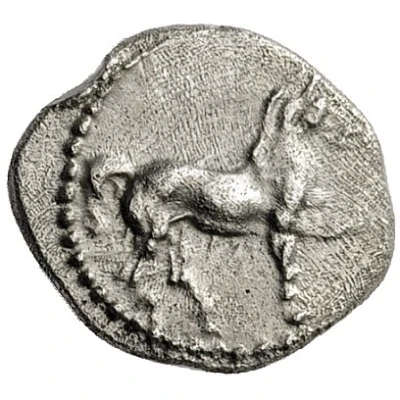


© Nomos AG
Obol 440 BC - 400 BC
| Silver | 1.04 g | 13 mm |
| Issuer | Larissa (Thessaly) |
|---|---|
| Type | Standard circulation coin |
| Years | 440 BC - 400 BC |
| Value | Obol (⅙) |
| Currency | Drachm |
| Composition | Silver |
| Weight | 1.04 g |
| Diameter | 13 mm |
| Shape | Round (irregular) |
| Technique | Hammered |
| Demonetized | Yes |
| Updated | 2024-10-10 |
| Numista | N#170982 |
|---|---|
| Rarity index | 100% |
Reverse
The nymph Larissa striding to left, her left hand at her waist and her right hand raised, bouncing a ball in the field before her
Script: Greek
Lettering:
Λ Α
Ρ Ι
Comment
Herrmann F/G IIIβ I, pl. III, 12 var.; cf. Traité IV, 682.
Interesting fact
The Obol coin from Larissa (Thessaly) was used as a form of currency in ancient Greece and was equivalent to one-sixth of a drachma. It was made of silver and weighed 1.04 grams. Despite its small size, the Obol was an important coin in ancient Greece, as it was used to buy everyday items like bread, wine, and other necessities. It was also used to pay taxes and debts. The Obol coin was minted in Larissa, which was a city-state in Thessaly, a region in central Greece. The coin features an image of a horse on one side and a flower on the other. The Obol was used for over 200 years, from 440 BC to 400 BC, and its design remained relatively unchanged during that time. Today, the Obol is a valuable collector's item and is considered a piece of ancient Greek history.
Price
| Date | Mintage | VG | F | VF | XF | AU | UNC |
|---|---|---|---|---|---|---|---|
| ND (440 BC - 400 BC) | - | - | - | - | - | - |
Values in the table are based on evaluations by sales realized on Internet platforms. They serve as an indication only for Obol (440 BC - 400 BC) coin.



